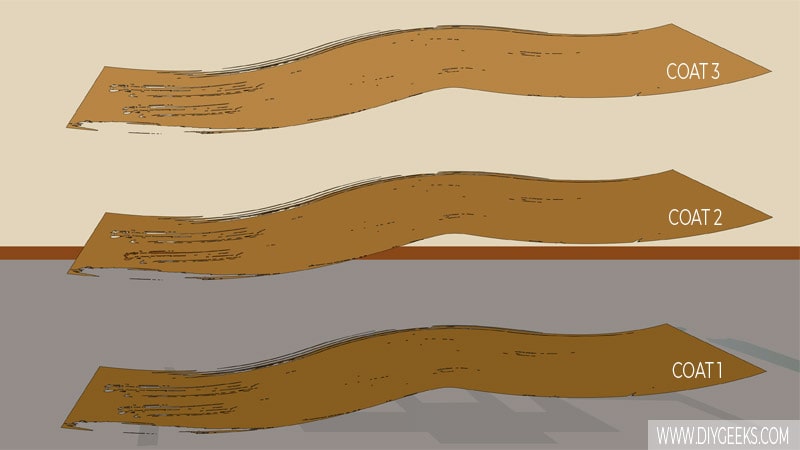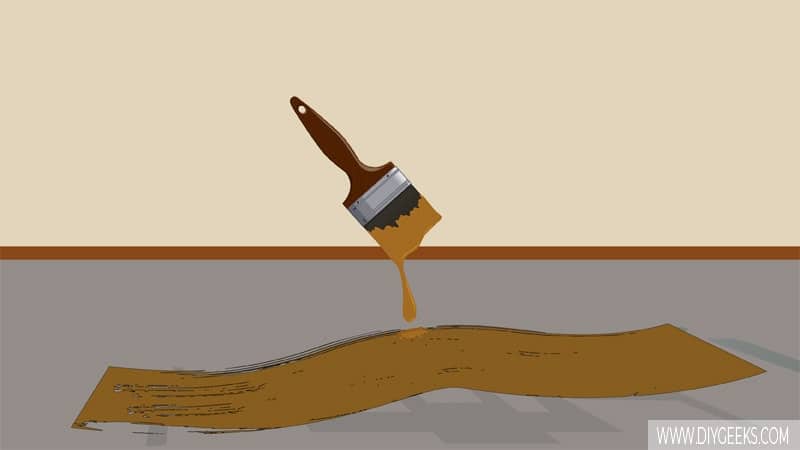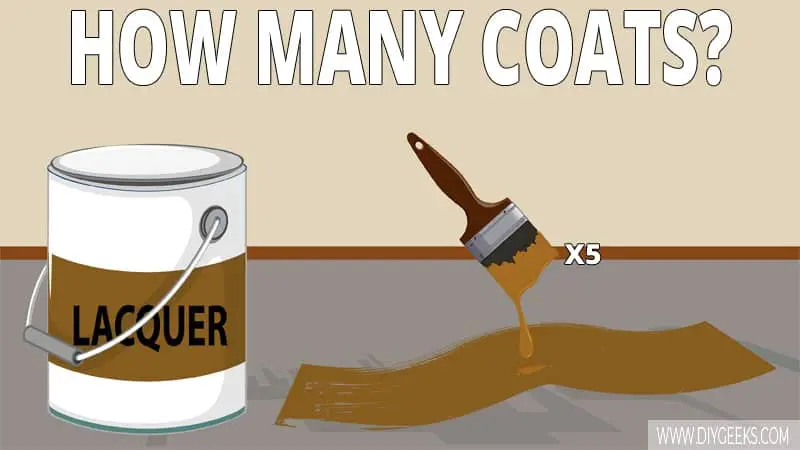You need between 2 to 5 lacquer coats for proper coverage and durability. The right number of lacquer coats depends on the surface type and where the surface is placed.
The number of coats is important as it determines the finish’s durability, strength, clarity, and dry time.
To know if you need another lacquer coat, inspect the finish. You need another color if the finish has poor coverage or is thin.
What’s The Maximum and Minimum Lacquer Coat Number?
The maximum lacquer coat number is five (5) while the minimum is two (2). The right number of lacquer coats depends on the surface type and where the surface is placed.
You need more coats for outdoor surfaces as they are exposed to constant water, moisture, and weather elements (rain). You need fewer coats for indoor surfaces as they aren’t exposed to constant water or weather elements.
If you apply more than 5 lacquer coats, the finish becomes too thick and can peel off. If you apply less than 2 coats, the finish is too thin, has poor coverage and durability, and won’t protect the surface properly.
How Many Lacquer Coats For Different Surfaces?
Wood
You need four (4) lacquer coats for wooden surfaces. Wood is a porous material and absorbs more sealer than most surfaces, so you must apply more coats.
Cabinets
You need four (4) lacquer coats for unfinished and bare carbines, three (3) coats for finished or painted cabinets, and five (5) coats for bathroom cabinets exposed to constant water.
Tabletop
You need four (4) lacquer coats for tabletops or decks as they are exposed to heavy usage, scratch marks, and dust.
Plastic
You need two (2) lacquer coats for plastic surfaces. Plastic surfaces are non-porous materials and don’t allow liquid penetration, so you don’t need many coats as they won’t adhere or dry.
Wood Floors
You need five (5) lacquer coats for wooden floors as the floors are exposed to constant usage.
Why Does The Number of Lacquer Coats Matter?

The number of lacquer coats matters as it determines the finish’s durability, strength, clarity, and dry time.
If you apply the right number of lacquer coats, the finish produces a colorless moisture-resistant coating that protects the surfaces from moisture, water, scratches, and other damage.
If you don’t apply enough lacquer coats, the finish won’t cover or protect the surface properly and will get washed off if exposed to constant water. Fewer coats produce a thinner finish that isn’t durable.
If you apply too many lacquer coats, the finish takes longer to dry, can turn sticky or tacky and peel off, and will have a milky (blurry) appearance that covers the wood grain or paint underneath.
The more coats you apply, the longer the sealer takes to dry and the blurrier the finish gets.
How To Know If You Need Another Lacquer Coat?

To know if you need another lacquer coat, inspect the finish. You need another coat if the finish has poor coverage or is thin, or if the sealer hasn’t produced a moisture-resistant coating over the surface.
If the finish has poor coverage or is thin, it won’t protect the surface from moisture, water, scratches, or other damages.
You don’t need another lacquer coating if the finish has good coverage, good moisture-resistant qualities, and a transparent color shade.
How Long Does Lacquer Take To Dry?
Lacquer takes between 30 minutes to 1 hour to dry between coats. The exact dry time depends on the number of coats, coat viscosity, room temperature, and humidity levels.
Lacquer dries faster if you apply the right number of coats, the temperature is above 50°F (10°C), and the humidity levels are lower than 50%.
Lacquer dries faster than other sealers as it’s solvent-based and formulated with solvents that evaporate and dry faster.
If you re-coat lacquer too soon, the finish will remain wet longer and can peel off as the existing coating solvent (oil) can’t evaporate and will prevent the new coating from adhering or drying.


